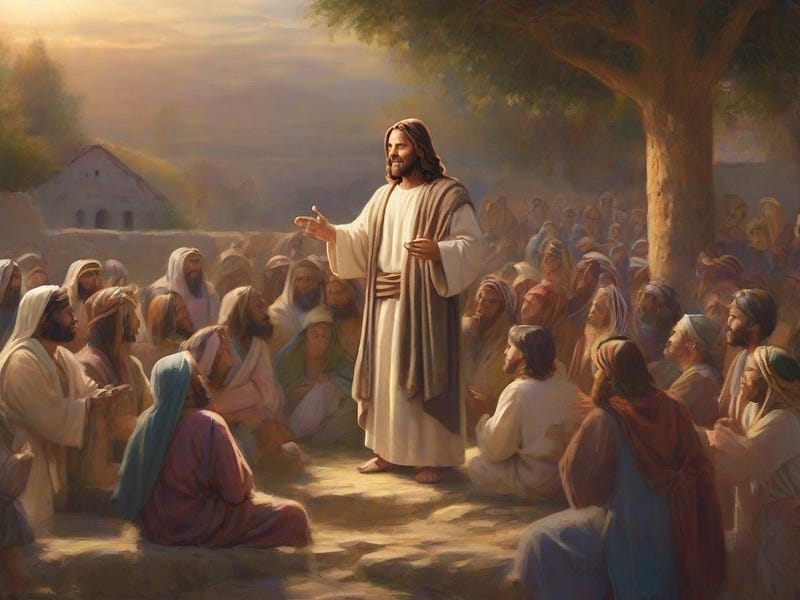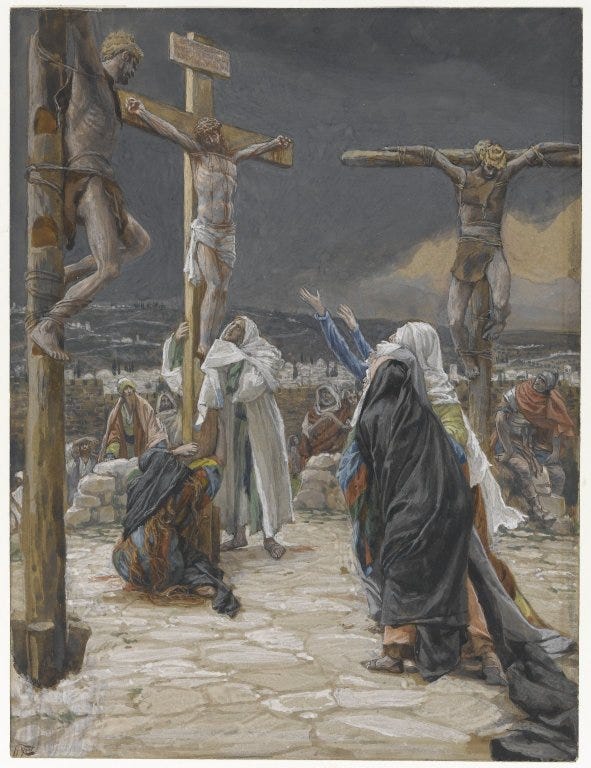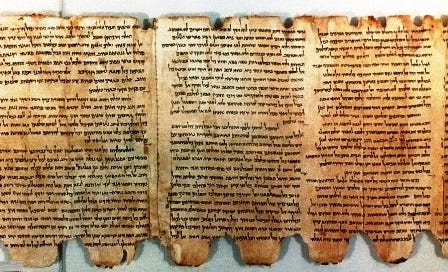Jesus Christ — God, prophet, or messiah? In search of evidence for the existence of the Son of God
Today, over 2 billion people profess Christianity and declare faith in Christ. However, who was Jesus really? For many, he is God, but in some religions, he only appears as a prophet. Regardless of dogmas and historical texts, the same question has persisted for years: did Jesus Christ really exist?

If we accept the proposition that Jesus is God, we should consider what faith really is. Above all, it is not knowledge and cannot replace it. Of course, there are similar cognitive aspirations, but faith can only complement it in a parascientific sense. If we believe in something, we do not know it.
What does faith mean?
However, if we know, we no longer need to believe. English philosopher John Locke claims that “reason, different from faith and its opposite, is the discovery of certainty or probability of such propositions or truths to which the mind arrives by deduction, deriving them from the ideas it has acquired, using its natural cognitive faculties.” This means: through sensory experiences or reflection. On the other hand, faith is an acknowledgment of the truth of a statement that did not arise through logical deduction but was accepted based on trust in the one presenting it, as originating from God and conveyed supernaturally. This way of revealing truths to people is called revelation, Locke adds.
Today, over 2 billion people worldwide believe in Jesus Christ. However, does that mean this person really existed? Are there any proofs that the Son of God truly existed?

Who is Jesus Christ?
The most important historical source where we learn about Jesus is the four Gospels. Three synoptic ones (Matthew, Luke, and Mark) along with the Gospel of John. The first three owe their name to the similarity in descriptions, language, vocabulary, and style.
There’s a theory about the existence of an early Christian document called the Q source. It was presumed to have existed before the formation of the New Testament. Hypothetically, it could have originated in Galilee in the 50s. The text might have contained a collection of Jesus’ sayings, later used by Matthew and Luke when writing their texts. Unfortunately, this document, if it ever existed, has not survived to this day.
According to historians, none of the evangelists personally knew Jesus. Biblical scholars argue that the Gospel of Mark was written around 70 AD. Matthew and Luke were thought to have been composed after 80 AD, and John after 90 AD. Thus, they were written 40 to 60 years after the crucifixion. Experts also note that only John and Matthew could have been witnesses to the life of Christ.
The apostle John was a fisherman from a lower social class, likely unable to read or write. In ancient times, these were not commonly taught skills, and education was reserved for the wealthy. Furthermore, Jesus and the apostles spoke Aramaic, while the Gospels were originally written in Greek.
Therefore, there’s a likelihood that these exceptionally well-written texts were authored by individuals professionally engaged in writing. However, it’s worth noting that none of the evangelists claim to have been apostles. These writings are in the third person, and some suggest they were anonymously written.
The names were attributed to the authors to lend apostolic authority to the emerging religion at that time. Therefore, it can be assumed that the presumed Matthew, Luke, Mark, and John wrote those texts based on accounts from other individuals. What then do we know based on the Gospels? Jesus was born before 4 BC during the time of Herod the Great. He spent his childhood in Nazareth. His ministry is said to have begun around 30 AD, preaching the coming Kingdom of God and identifying himself as the Messiah. He was crucified by the order of Pontius Pilate.

Non-Christian Writings
In Roman writings, there’s a mention of someone named Jesus. Publius Cornelius Tacitus, in his text from 115 AD titled “Annals,” writes:
“Nero fastened the guilt and inflicted the most exquisite tortures on a class hated for their abominations, called Christians by the populace. Christus, from whom the name had its origin, suffered the extreme penalty during the reign of Tiberius at the hands of one of our procurators, Pontius Pilatus, and a most mischievous superstition, thus checked for the moment, again broke out not only in Judea, the first source of the evil, but even in Rome, where all things hideous and shameful from every part of the world find their center and become popular.”
Jewish historian Josephus Flavius in “Antiquities of the Jews” describes James the Just, stating he was the brother of Jesus who was a leader of the Christian movement in Jerusalem.
“Festus was now dead, and Albinus was but upon the road; so he assembled the Sanhedrin of judges, and brought before them the brother of Jesus, who was called Christ, whose name was James, and some others, [or, some of his companions]; and when he had formed an accusation against them as breakers of the law, he delivered them to be stoned.”
Historians note the authenticity of the description but raise doubts about the phrasing regarding Christians not being authored by the original writer.

The Shroud of Turin
It’s a linen cloth believed to have wrapped Jesus immediately after being taken down from the cross. Visible on it are numerous bloodstains, and a human figure is discernible — both front and back. It’s one of the Church’s important relics kept in Turin, Italy. The earliest mentions of the shroud appear in the Gospels.
However, from a scientific perspective, this evidence is disputed. Studies using radiocarbon dating have shown that it doesn’t originate from the time when Jesus could have lived but rather from the 14th century. Officially, the Shroud of Turin is not recognized as authentic evidence of Jesus’ existence, but some believers regard it as sacred.

Dead Sea Scrolls
This collection of documents was written in three languages: Hebrew, Aramaic, and Greek. Discovered between 1947–1956 in 11 caves near the ruins of Qumran in the West Bank. Radiocarbon dating was also used in the case of this archaeological find.
It suggested that the scrolls could be from the time Jesus lived. In the manuscripts, there’s a mention of a “Teacher of Righteousness.” Unfortunately, it’s challenging to identify who this was since the texts don’t name the individual. Some today argue it was Jesus, while others doubt it. Whoever this person was, the chances of ever knowing their identity are slim.

Due to the lack of conclusive evidence, it’s probable that we’ll never ascertain whether Jesus Christ truly existed. The evidence is scant, and the writings are often questioned by historians and biblical scholars. Following Locke’s trail, until we find any substantial and tangible evidence for or against the existence of Jesus, faith in him will persist, and he will remain within the sphere of the sacred.
Attention all readers!
As content creators on Medium.com, we face minimal compensation for our hard work. If you find value in my articles, please consider supporting me on my “Buy Me a Coffee” page. Your small contributions can make a big difference in fueling my passion for creating quality content. Thank you for your support!


